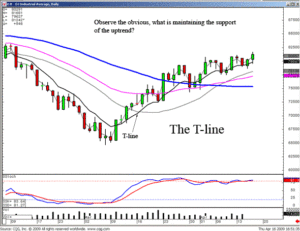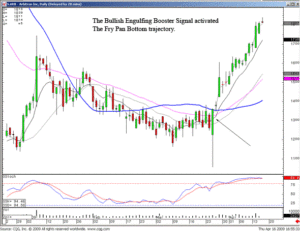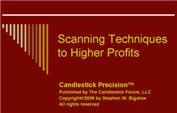Growth stocks are those companies with shares whose earnings are expected to grow at an above average rate in comparison to the market. These stocks typically do not pay dividends because the companies opt to reinvest any retained earnings back into capital projects.
There are common characteristics among growth stocks as well as indicators that the stock investor can look for. These indicators can include the following:
1) Strong growth rate – This includes not only historic growth rates but also the projected growth rate when investing in stocks of this nature. The growth rate will vary between small and large companies but typically smaller companies need to have a 10% growth rate for the past five years to qualify whereas the larger companies need to have about 5% – 7% growth rate to qualify.
2) Strong return on equity (ROE) – You must compare a company’s ROE with the industry in which is presides as well as its five-year average when stock investing.
3) Earnings per share (EPS) – The earnings per share is very important as well when investing in growth stocks. Investors must be sure the company is translating its sales into earnings, and management must be controlling costs. Investors must take a look at pre-tax profit margins and they should exceed the past five-year average as well as the industry average.
4) Analysts also take a look at the business model for a company as well as its market position to be sure that this stock price can double in five years.
Growth Stocks vs. Value Stocks
Growth investors look for companies with fast growing revenues and earnings as well as rising stock prices. Growth investing focuses on stocks that are growing and that have the potential for continued growth. Value investors look for bargains. Bargains are stocks that are trading at low prices relative to earnings, or stocks that have low price to earnings ratios. Value investing looks for stocks that the market has under priced and it looks for stocks that have the potential to increase as the market corrects itself.
Which Type of Stock Is Better?
This depends on what is occurring in the stock market. During periods such as the late 1990’s, growth stocks did very well, however there were time periods when value stocks did better. Investors should just be sure to aim for portfolio diversification and shouldn’t only invest in one type of stock.
Simple candlestick rules makes investing very easy. It also makes investing very relaxed. As illustrated in the previous newsletter, maintaining short positions during February and March was not a high anxiety process. What fears creep into investor sentiment as profits continued to grow? Where should I take profits? Should I take it now so I lock in some profits? These questions constantly nag an investor as their short position profits keep growing as a downtrend persists. Too often, positions are closed because of the fear of giving back some of the profits that have built up. This anxiety can be greatly diminished when using simple candlestick rules.
A downtrend will persist as long as there is not a candlestick buy signal and a close above the T. line. This rule works so well, an investor should be comfortable and relaxed with short positions until that combination occurs. The same is true in an uptrend. The Dow has moved up after the first week of March. What occurs in most humans as a trend continues? The anxiety level increases. They become more fearful of losing the profits they have made. This usually changes the investment strategy. The rational decision-making involved with analyzing the charts gives way to emotional factors. The sage investment advice, “Cut you loses short and let your profits run. ” Is a very viable investment process if investors would allow the discipline to work. Unfortunately, because of emotions, the opposite is usually true. The losses become greater while the gains get nipped in the bud because of the fear factor.
Candlestick analysis operates off very simple principles. Buy when the candlestick signals tell you to buy, and sell when the signals tell you it’s time to sell. Many investors have a difficult time when it comes time to sell. They either sell too early, in fear of giving back profits or they sell too late, afraid they might not get all of the price move. Candlestick analysis makes those problems very easy to overcome. The common sense rules the Japanese rice traders utilized for centuries allowed them to maximize profits and minimize losses. The signals and corroborating indicators take the subjectivity out of taking profits.

DOW
Another aspect of investing benefited by recognizing the continuation of trends involves pattern analysis. Having the knowledge that current conditions of a market trend has not changed allows for the participation in candlestick patterns. These patterns may take much longer to set up. The end result of a pattern has a much better chance of creating huge profits if nothing dramatic is occurring in the current overall trends. The Jayhook patterns, the Fry pan bottom pattern, the Cradle pattern and the Scoop pattern have better probabilities of success when the markets are gradually trending versus oscillating dramatically.
As illustrated in our recent recommendation on ARB, the dramatic buy signal escalated the result of a Fry pan bottom pattern. Since witnessing the Bullish Engulfing Booster signal, the upward trajectory of the trend has been very dramatic. The continuation of this price move as been benefited by the slow gradual uptrend of the markets in general. This trend may have had a much different result had the market indexes been producing a bearish trend.

ARB
The persistence of a trend also allows for the establishment of high profit option trading strategies. A general trending market diminishes the whip sawing actions in option trades that might been found in more choppy conditions. Being able to analyze the market trend is greatly important for establishing the right investment strategies for the right times of the market. The information incorporated into each individual candlestick signal allows an investor to make much more accurate trend analysis than other technical methods. The clarity produced by the signal bodies helps determine how heavily long or short a portfolio is positioned.
Chat session tonight 8 PM ET – open to everybody. With these market conditions, what option strategies should be used? Click here for instructions.
Good investing,
The Candlestick Forum Team
This Week’s Special
Scanning Techniques to Higher Profits – 30% OFF!
Streamline your stock selections with this step-by-step scanning technique.
Website special reflects current newsletter. If you are reading an archived newsletter you will be directed to Current Website Special.
48 Hour Special

Speak Your Mind